iPhone 6s and 6s Plus review: More than just a refresh

Some people look a little unkindly on the so-called "S" years -- those years when Apple updates the iPhone, but doesn't change how it looks, and then sells that while secretly working on something flashier that will debut 12 months later. I don't think that's exactly fair. Those "S" years are when Apple adds some of its most useful features. Siri? Touch ID? Both valuable additions to the iPhone platform that have since grown in importance. This year we get 3D Touch, a potentially awesome way to interact with iPhones. The thing is, a device's worth isn't just tied up in one feature: It's about how all those moving parts work together. That's why the new 6s and 6s Plus (starting at $649 and $749, respectively, for 16GB models) are such great phones. The combination of much-improved hardware and some polished software makes this year's release far more than just a modest refresh.
Hardware

No, your eyes don't deceive you: The 6s and 6s Plus look nearly identical to last year's models, save for a new rose gold color option that oscillates between "vaguely lavender" and "shiny new penny" depending on the light. The sleek, rounded aesthetic might not raise as many eyebrows as it did last year, but it's still one of my favorite iPhone designs. Aside from the pink color option, the other changes aren't particularly noticeable. Both phones are now made from 7000-series aluminum, an alloy used in the aerospace industry that, when compared to last year's phones, makes for a sturdier but similarly lightweight design. The regulatory icons that used to live on the iPhone's back have been removed too, leaving a teensy "S" logo to let the world know you've upgraded.
Meanwhile, we're still left with the same 16GB, 64GB and 128GB storage options as last year, and you're almost certainly going to want one of the latter two. I was hoping against hope Apple would finally give the 16GB model the heave-ho and raise the baseline to 32GB of space. That was clearly silly of me. Economies of scale aside, iOS 9's smaller footprint and new developer tools like app slicing make the 16GB iPhone a little easier to make do with, though the inclusion of an upgraded 12-megapixel camera, 4K video shooting and animated Live Photos (which are turned on by default) means some will have a tough time keeping free space available.
As ever, the Touch ID fingerprint sensor lives in the iPhone's home button, but this year's module is a clear improvement: Apple claims it can pick up your fingerprints up to twice as fast as before. I can't make out exactly what the speed multiple is here, but Touch ID really is blazing fast now, and I can't remember the last time it didn't work on the first try, either. In fact, it's actually so fast that I've had to change some of my daily behaviors as a result. You see, I used to be one of those people who tapped on the home button to check the time or change tracks while I was in my car (yes, dangerous, sorry). With the 6s and 6s Plus, that doesn't fly anymore: Touch ID picks up all but the quickest home-button taps.
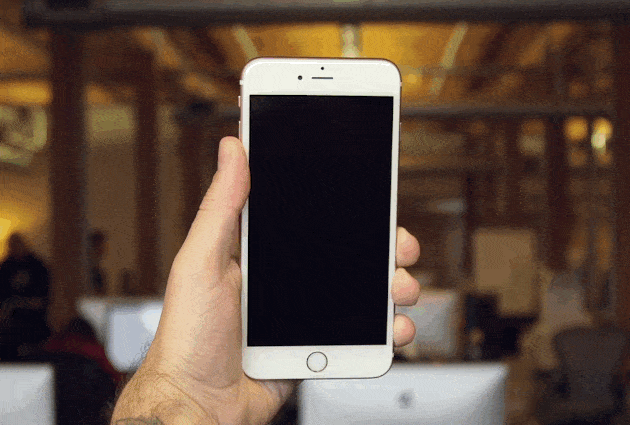
As it happens, both phones are a touch thicker and heavier than before, but they're still comfortable to hold, and the change in thickness specifically is so subtle that it's nearly imperceptible. As for the weight, the 6s and 6s Plus do indeed feel noticeably weightier: The 6s weighs in at 143 grams, up from 129, while the bigger 6s Plus now comes in at 192 grams, up from 172. Not that that's a bad thing. All told, this is one of the few times an iPhone has gotten beefier (the 4s was slightly heavier than the 4), and I'm actually quite pleased about it. At some point, there has to be a lower limit to how thin a phone can get and still be comfortable to use. I'd much rather see companies abandon that ceaseless march toward cartoonishly thin designs and instead work to make better use of the sizes they've already achieved. Bigger batteries, anyone?
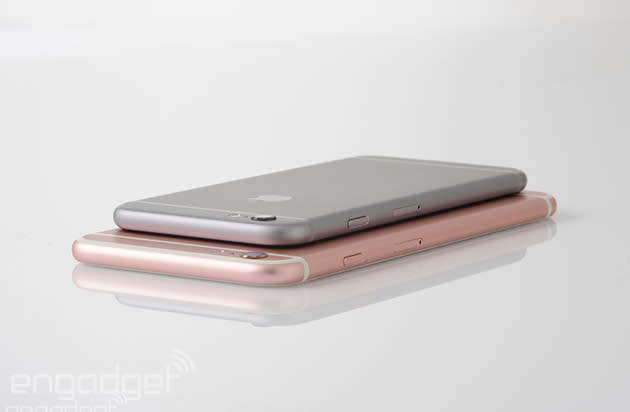
Speaking of the sort, the cells in these new models are actually slightly smaller than they were before: 1,715mAh in the 6s and 2,750mAh in the 6s Plus. I'll delve more into battery life a little later (spoiler alert: It hasn't really changed), but recent teardowns seem to reveal why we've gotten a bit of a downgrade this year. In short, you have that new 3D Touch screen to blame. To give you a little background, the display crams 96 pressure sensors into the backlight layer of the phones' Retina HD displays, along with a Taptic Engine that provides some subtle vibrations when you bear down on the screen. Turns out, the engine took up some extra room near the phones' bottom edges, just under the spot where the battery sits. For now, the time-savings you get from using 3D Touch gestures feels worth the slightly smaller batteries, but hopefully Apple will eventually figure out how to shrink the necessary components so that it doesn't have to compromise on battery size.
A new display, and a new way to touch it
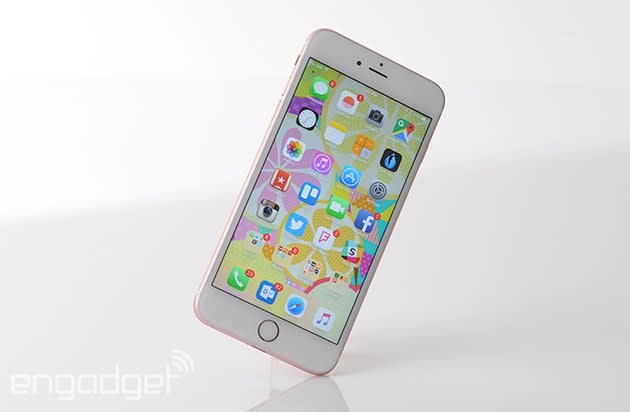
At first glance, you probably wouldn't notice anything different about the IPS screens on the 6s and 6s Plus. After all, they're the same size as before (4.7 inches and 5.5 inches, respectively) with the same pixel density (326 ppi, or 401 ppi on the Plus). You won't even notice the improved glass covering them until you drop it (please don't). The eagle-eyed among you might catch that both screens are a touch brighter with slightly better color reproduction. There is, of course, something much more important at play here. It's called 3D Touch, and it's the biggest change in how we interact with iPhones since Siri.
Let's start with the broad strokes: If you press your finger down on, say, an app icon, you'll get a small menu of quick actions that you'd usually have to be inside the app to use. You'll also feel a brief vibration from the Taptic Engine as a sort of tactile "thumbs up." Like any new behavior, applying force to your iPhone's screen will take getting used to. The whole thing is made a little trickier by the fact that it's initially easy to mix up a 3D Touch and a long-press (like the one used to rearrange your app icons). It didn't take more than a day or two for my muscle memory to learn the amount of pressure needed to make 3D Touch work, but hey -- your mileage may vary.
Those 96 3D Touch sensors can also take precise measurements as you push down and release. Imagine, for instance, playing a racing game and being able to press the screen to accelerate past the chump who just whiffed while taking a corner. If that's the future of smartphones, bring it on.
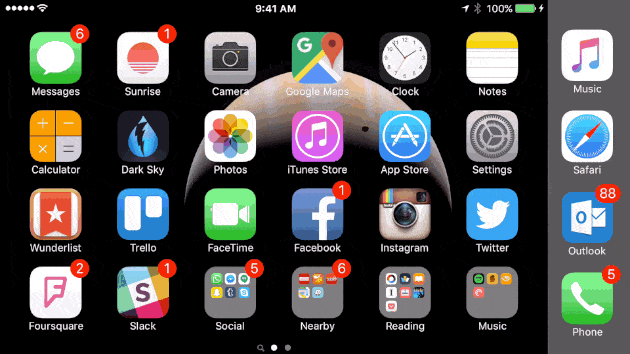
What's more, there's an entirely new vocabulary around this 3D Touch screen. Pressing down to preview something in a little pop-up window -- be it a web link, or an address someone texted you -- is what Apple calls "peeking." Apply just a bit more pressure and the phone will bring up the usual, full-screen app view, in this case a Safari window or a location in Apple Maps. Congratulations, you just "popped" something. You can't use all the same 3D Touch actions if you're using an iPhone 6s Plus in landscape mode. Pressing down on app icons still brings up the menus you'd expect them to -- as evidenced by the GIF above -- but you can't peek/pop addresses or hyperlinks in Messages and Mail while the phone is sideways.
Apple's already laid out guidelines about how developers should implement 3D Touch, and they're basically centered on one key idea: 3D Touch is about helping users do things faster. So far, the vast majority of apps don't yet support 3D Touch, but the ones that do take different approaches as to what you can peek at. Some, like Twitter and Instagram, let you press down on their app icons to bring up those Quick Actions menus for near-instantaneous tweeting and photo sharing. Others, like Dropbox, offer previews of your files when you long-press their filenames in a list, but there's no app icon interaction. OpenTable takes sort of a hybrid approach -- you'll get both an app icon menu and the ability to peek at restaurants' locations in Maps as you're scrolling through the culinary options.
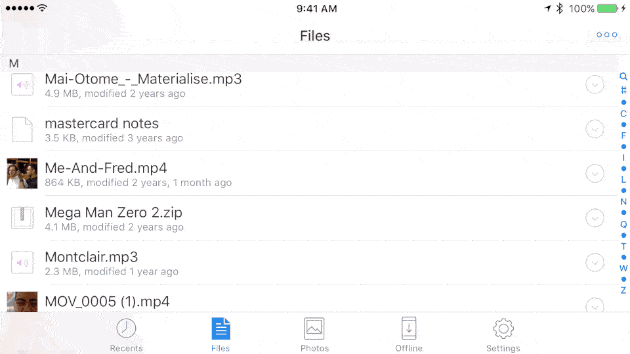
This all might sound complex, but trust me: It's not. Once more developers get on board, people will be able to zip around their home screens and just do things, as opposed to constantly jumping in and out of apps. It's also a tremendously useful tool for getting quick bits of context -- why yes, I would love to see a map of that sweet poutinerie in Berkeley, thanks very much.
After I got used to using 3D Touch, going back to the plain screen on my iPhone 6 was almost painful. Heck, even if you use the 6s and 6s Plus full-time, most developers haven't had the chance to build 3D Touch support into their apps yet. I can't tell you the number of times I was reading something in a non-supported app like Twitter, and pressed my thumb down on a link only to have nothing happen. Whoops! The mild twinge of annoyance I felt every time that happened speaks to how powerful 3D Touch is: It might seem like a gimmick at first, but it quickly became a feature I wanted to use all the time.
Software
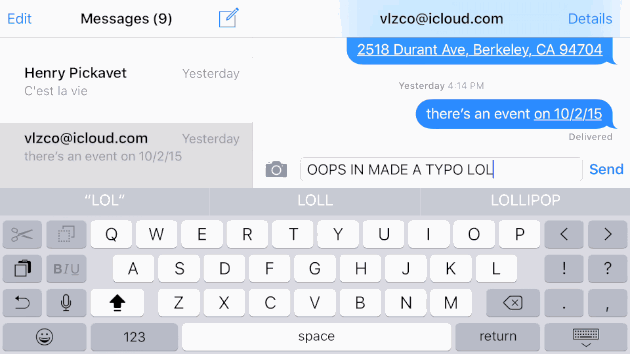
I've already penned a few thousand words on iOS 9, and its focus on cohesiveness and efficiency makes a great match for the new iPhones. Most of the software tweaks on the 6s and 6s Plus are centered on those lovely little 3D Touch interactions, but there's one more trick that's currently only available on these things. Jump into Siri's settings and you'll find that you can now enable "Hey Siri" -- Apple's always-on listening mode -- to work even when you're not connected to a power source. The feature launched with iOS 9 just a few weeks back, but it works best with the new iPhones' more efficient M9 co-processor helping out under the hood. Weird as it sounds, I've taken to just talking to her sometimes when I want to listen to some Capital Cities in Apple Music, add yet another event to my stupid-packed calendar or turn on Airplane Mode when it's time for some shut-eye.
What's more, one of my favorite features from recent iPads has reached the new iPhones: 3D-Touching the keyboard while pecking out a text turns it into a trackpad for precise placement of the cursor when an inevitable typo pops up. If you lump in these tweaks with all the other thoughtful design changes in iOS 9, you're left with a tightly integrated package that tries to give us the apps and info we want at just the right time.
Camera and Live Photos
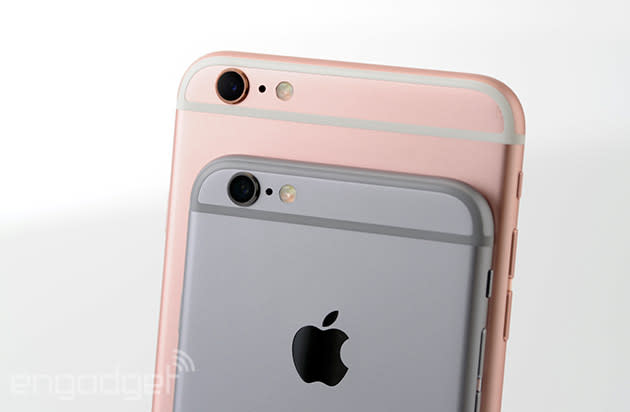
iPhones account for a huge chunk of the photos taken every day, so it's no surprise that Apple takes this camera business seriously. Thankfully, after several years, Apple finally traded in its 8-megapixel sensor in favor of a 12-megapixel main camera. Naturally, it's actually not so much the higher resolution that matters; it's all the other, more technical bits that should help improve photo quality. The folks in Cupertino went for smaller, more densely packed pixels (1.22µ, down from 1.5µ in the iPhone 6) that make for higher-resolution shots... with the added potential for more noise.
That's where Apple's "deep trench isolation" comes in: The company managed to separate the sensor's photodiodes to keep incoming photons from introducing interference into surrounding diodes. You don't really need to worry about that, though: It basically just means your photos should come out nice and crisp. Pair all that with a five-element lens and a familiar f/2.2 aperture and we've got ourselves another serious camera contender.
Right, so how do photos actually look? Pretty great. Colors look nicely saturated, but naturally so, while the standard Photo mode handles dynamic range and exposure better than I expected. This becomes especially apparent in landscape shots; neither the 6s nor 6s Plus blew out the sky on bright days, which made for some great shots of Toronto's famous Honest Ed's superstore. Once you get a little closer to your subject, though, things start to go slightly awry. Just about all of the photos I shot using the 6s and 6s Plus's main cameras were crisp with clear color separation, but zooming in didn't reveal much more detail than in photos I took with the iPhone 6. That's not to say the 6s' photos were worse than ones taken with last year's iPhone; they just weren't always the dramatic leap forward I was hoping for.

Photos taken with the iPhone 6s Plus are, in most cases, on par with those taken on the regular 6s, but it does fare a little better in low-light situations thanks to its optical image stabilization. Those of you with really steady hands might not notice as much of a difference, but it came in handy when shooting video. Also on the plus side, the front-facing FaceTime camera has also received a long-overdue upgrade to a 5-megapixel sensor. It should shock absolutely no one that selfies came out crisper and more natural looking, and the software-based screen flash does a respectable job lighting up faces in bars.
As for video, the 6s and 6s Plus can shoot in 4K -- not that most people have 4K-ready screens in their homes yet. The resulting footage is remarkably sharp, with colors that were more or less true to life. Of course, all of this comes at a price: 4K video will eat up your free space in a hurry if you let it, which is why Apple didn't bother setting it as the default recording quality.

What is enabled by default, however, is the Live Photos feature. You've probably seen the demos already; when you snap a photo, the camera captures just a little audio and video before and after the shot is taken -- much like the Living Images feature found on recent Lumia phones. The end result is a neat, gimmicky way to capture enhanced pictures. They're evocative at best and sort of lame at worst, but artsy types will surely get a kick out of concocting cool Live Photo scenarios and sharing them to and fro. Remember, Live Photos are shareable between anyone running Apple's latest phone, watch or computer operating systems, so they need not languish alone on your 6s. They'll quickly spring to life as you thumb through your Camera Roll, and you can set them as Live Wallpapers too -- just apply a quick 3D Touch to run through the animations on your lockscreen.
All told, then, the iPhone 6s and 6s Plus have great cameras. And yes, that's "cameras" as in plural. Here's the rub, though: The competition hasn't exactly been sitting on their haunches these past few years, and devices like the Galaxy S6 line and Motorola's Moto X Pure edition are powerful pocket cameras in their own right. Are these new iPhones definitively the best mobile cameras on the market? No, but they're very strong options that stack up nicely against the rest of the greats. We're all better off for the competition.
Performance and battery life
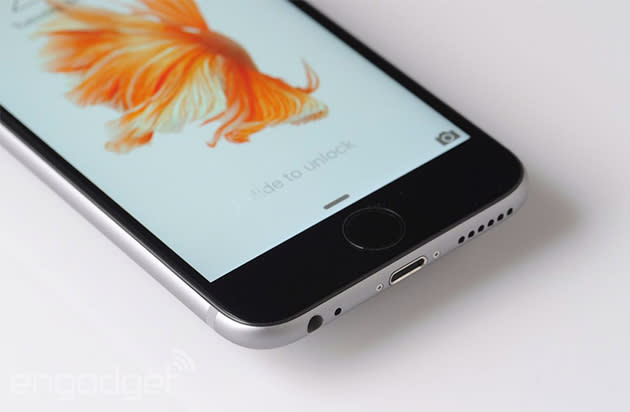
A new kind of touchscreen and some upgraded cameras are one thing, but what about the silicon running under the hood? This year, we've got a new 64-bit A9 chipset thrumming away inside both the iPhone 6s and 6s Plus, which, according to some benchmarking tools, appear to be made up of dual 1.8GHz Typhoon CPU cores, the GPU and the updated M9 co-processor. Apple never comments publicly about how much RAM its phones have, but recent teardowns show that the new iPhones have 2GB, just like the most recent iPad Air and Mini. All together, that's the biggest performance increase from one generation to another that we've seen in a while, and it shows.
I spent most of my time testing the iPhone 6s and 6s Plus by restoring them from recent backups of an iPhone 6 and 6 Plus, and then using them side by side. The difference is obvious: Launching apps, firing up webpages and multitasking were all noticeably smoother on the newer iPhones. This performance gap can still vary a bit; the older iPhones would occasionally get close to 6s speed, but they never fully caught up. The benchmark table below paints a pretty good picture of just how much better the 6s and 6s Plus are at handling graphically intensive tasks like playing games. No dropped frames, no stuttering, no jankiness -- the 6s and the 6s Plus were the clear winners.
iPhone 6s | iPhone 6s Plus | iPhone 6 | iPhone 6 Plus | |
|---|---|---|---|---|
3DMark Unlimited IS | 24,601 | 27,542 | 16,689 | 17,902 |
Geekbench 3 (multi-thread) | 4,427 | 4,289 | 2,885 | 2,803 |
Basemark OS II | 2,354 | 2,428 | 1,441 | 1,520 |
SunSpider 1.0.2 (ms) | 230 | 220 | 351 | 388 |
SunSpider: Lower scores are better | ||||
More horsepower plus smaller batteries usually only means bad news, but the iPhone 6s and 6s Plus fared surprisingly well in our standard rundown tests. With screen brightness set to 50 percent and a video looping indefinitely with WiFi on and connected, the 6s hung in for 10 hours and 4 minutes, just short of the 10 hours and 19 minutes we saw on last year's iPhone 6. Meanwhile, the 6s Plus and its bigger battery managed to eke out 12 hours and 37 minutes, narrowly besting its predecessor. Frankly, I wasn't expecting either iPhone to match last year's results, but whatever Apple's doing with its silicon sure seems to be working.
You're probably not spending over 10 hours a day watching the same video over and over on your phone, though, and thankfully the iPhones do a great job keeping up with real-world demands too. In my case, a typical day of use consists of horsing around on social networks, firing off messages in Slack and Outlook, intermittent voice calls and the occasional bathroom break playing Pokémon Shuffle. With that kind of use, the iPhone 6s usually made it through an 11-hour workday with 15 or 20 percent battery life to spare, at which point I fired up Low Power Mode for another hour or two before plugging it in. if you're a bit more demanding or simply can't stand the idea of being tethered to an outlet, you might want to go in for the 6s Plus: I routinely was able to squeeze out 18 hours of use on a charge.
The competition

If you're on the prowl for a new smartphone and consider yourself platform agnostic, Samsung's Galaxy S6 line would be a good place to start. Samsung shares Apple's fondness for sleek, metal-and-glass designs, and both the 5.1-inch S6 and curved-screen S6 Edge pack some of the fastest silicon I've ever seen in an Android handset. Both phones are also comfortable to hold despite being bigger than the iPhone 6s. And if comfort and big screens are your concern, there's a good chance the Galaxy Note 5's curvaceous back will fit your palm better than the iPhone 6s Plus.
Then, of course, we've got some big-name options that aren't even available yet. There's a new pair of Nexus phones -- the 5X ($379) and the 6P ($499) -- that each offer potent horsepower at a reasonable price. Microsoft's eager to prove it's still in the smartphone game too, and is holding a keynote next week where it's probably going to announce the first high-end Lumia phones we've seen in ages. There's no word on price, unfortunately, and none of these options are likely to sway ardent Apple fans, but people willing to jump ship are about to have a lot great choices on their hands.
Wrap-up
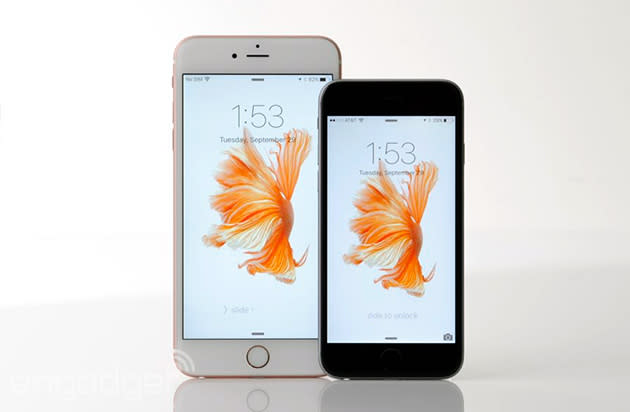
It's easy to say that these are the best iPhones Apple has ever made, but that's true every year. Like I said before, a device's worth isn't tied directly to a single feature: The important thing is how all of its components and design flourishes and features and interaction elements fit together as a unified whole. The iPhone 6s and 6s Plus nail it -- mostly. They're great phones: well-built, well thought-out and brimming with potential. So, let's cap this off with a little buying advice. If you have an iPhone 5s and are itching to turn it in, now's the time. If you're an iPhone 6 or 6 Plus owner, this is a worthy upgrade, but no one will fault you for waiting another year. If you want the best iPhone you can buy right now (and don't mind a bigger device), you want the iPhone 6s Plus. And if you're tired of everyone insisting that big phones are the future and asking "What's wrong with you; why don't you have one yet?" buy a 6s and tell them to buzz off.
All product photos by Will Lipman. James Trew contributed camera samples.

























































































